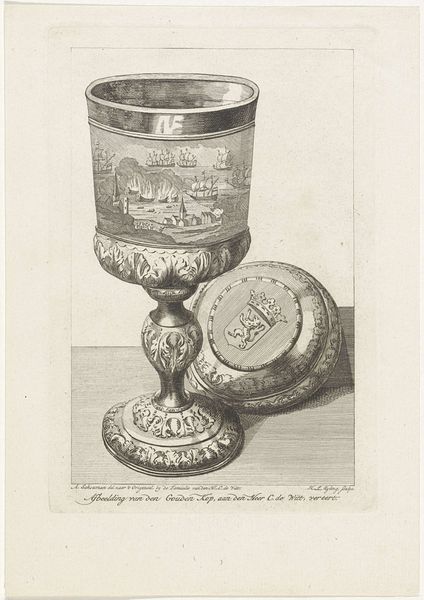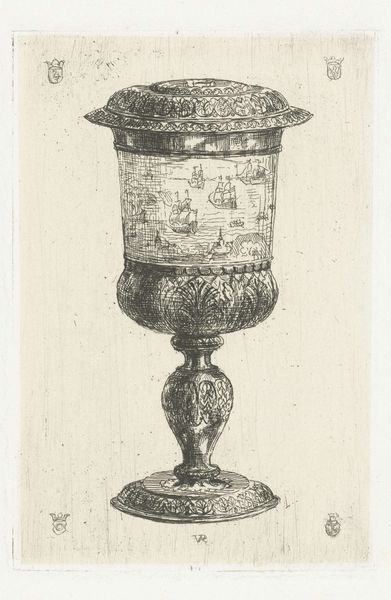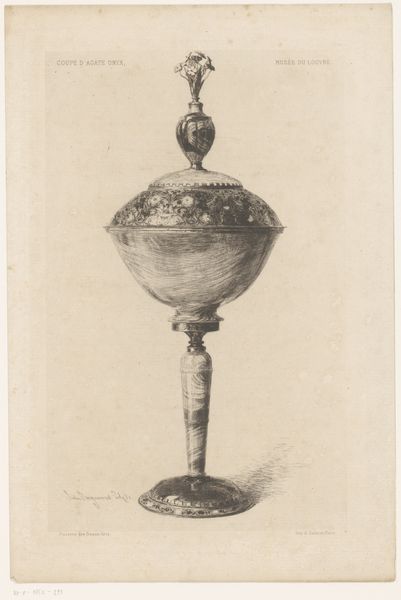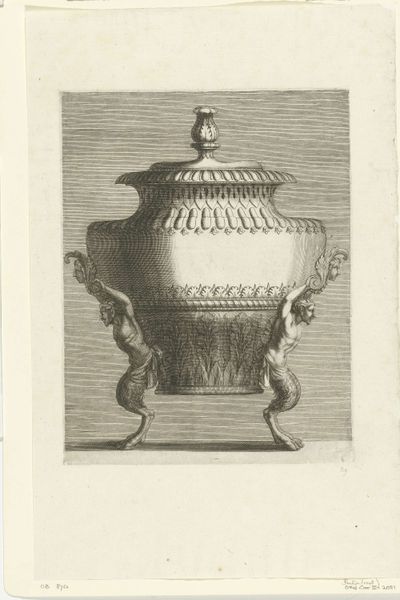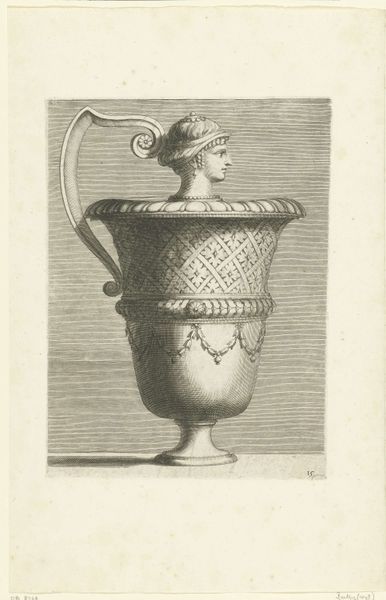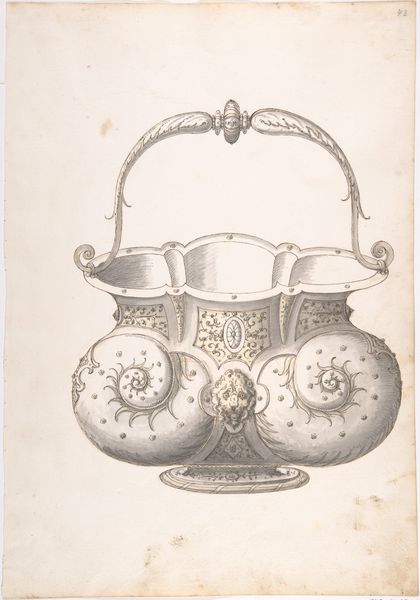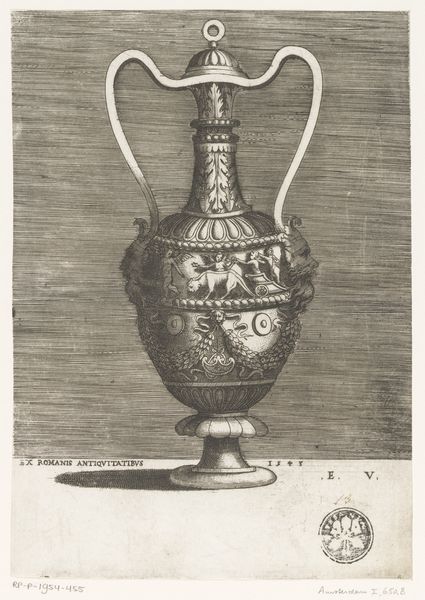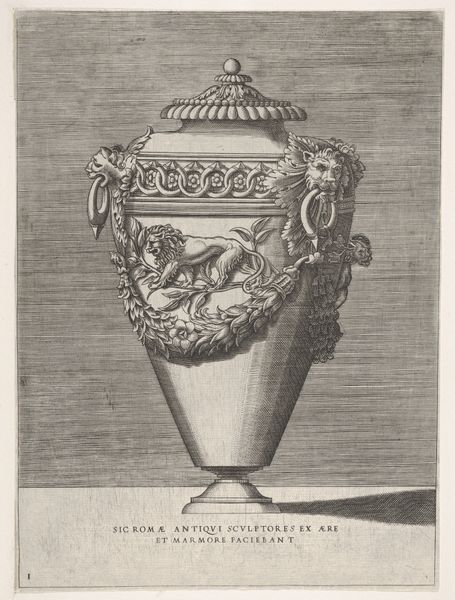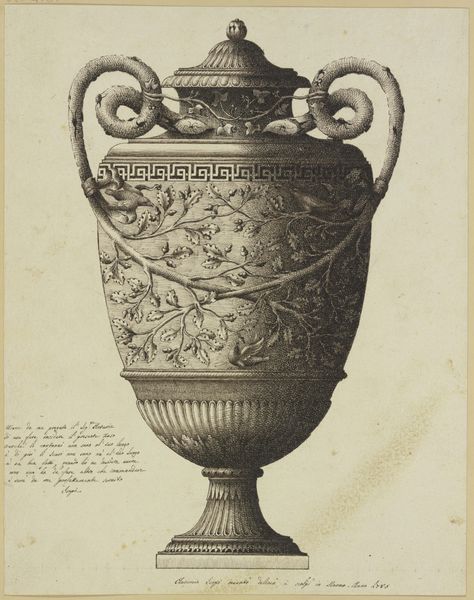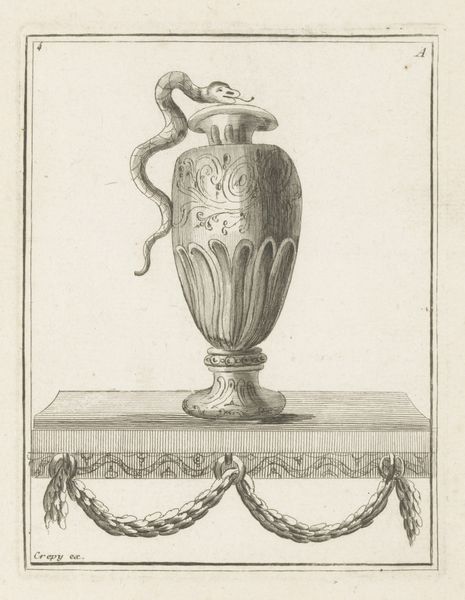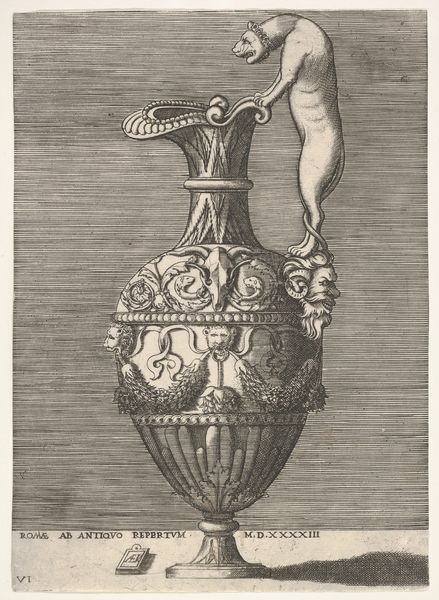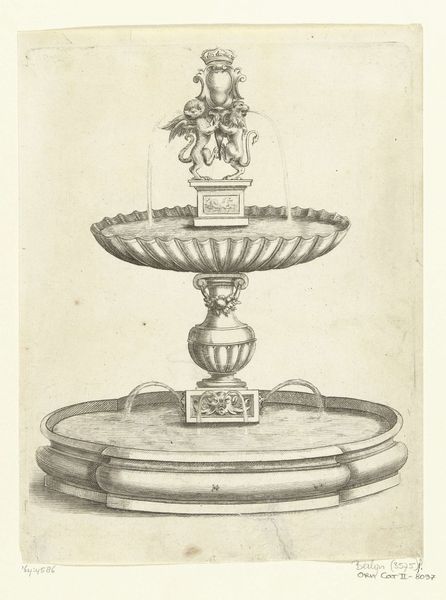
print, glass, engraving
#
baroque
# print
#
old engraving style
#
glass
#
decorative-art
#
engraving
Dimensions: height 149 mm, width 100 mm
Copyright: Rijks Museum: Open Domain
Editor: Here we have "Pot of drinkbeker met deksel", a piece created by François van Bleyswijck between 1730 and 1735. It's an engraving of a lidded drinking vessel, rendered in a meticulous baroque style. It feels both familiar, in its representation of a domestic object, and distant, owing to its antique form and illustrative approach. How would you interpret this work in terms of its historical and cultural context? Curator: Well, consider this print as a window into the burgeoning consumer culture of the 18th century. The very act of creating and disseminating this image, intended for a broad audience, suggests a shift in how decorative arts were perceived and consumed. Does the detailed rendering tell you something about the intended audience and their aspirations? Editor: Perhaps the print served as a catalog, showcasing the skill of the artisan and the desirable status associated with owning such objects? The intricate engraving hints at the luxury this object embodies. Curator: Exactly! These types of prints often functioned as marketing tools. Think about the social implications of accessible imagery; it democratized access to visual culture but simultaneously fueled consumer desires, reinforcing social hierarchies through object ownership. How might the setting—the Rijksmuseum—alter our perception of this print's function? Editor: Now it is an object of historical study, disconnected from its original mercantile function but speaking volumes about artistic representation and consumerism in the 18th century. So it moves from something functional to being analyzed and interpreted. Curator: Precisely. The transformation from trade material to museum piece underscores the evolving public role of art, especially its capability to reveal social trends and transformations across time. Thanks to prints like this one, everyday objects are not only aesthetically represented, but are embedded within layers of meaning. Editor: This dialogue has illuminated the dynamic intersection of art, commerce, and cultural identity in the 18th century! It also makes me reconsider the ways consumer culture and advertising operate in art today. Curator: Indeed. Understanding the history of imagery allows us to critically assess its present and future impact on our society. It's all about understanding the layers.
Comments
No comments
Be the first to comment and join the conversation on the ultimate creative platform.
